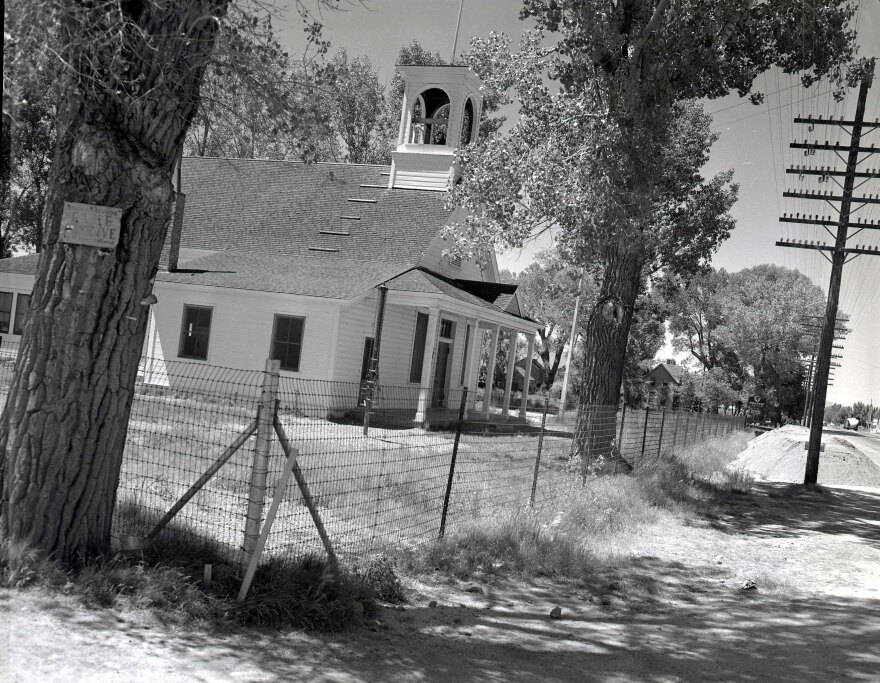The Truckee Meadows is known today for its two major cities of Reno and Sparks. But the valley was once home to a number of small, though vibrant, population centers with their own stories and a few visible reminders. Historian Alicia Barber describes one of them in this segment of Time and Place.
Long before Sparks, before Reno, even before there was a Nevada, the Truckee Meadows was home to a handful of communities that have been all but forgotten. One of the largest was Huffaker’s, named for Granville Huffaker, who settled the area in 1858—one year before prospectors discovered the Comstock Lode, and a full decade before the founding of Reno.
Huffaker started ranching along Thomas Creek, six miles south of the Truckee River. By the time of Nevada statehood, Huffaker’s had 300 residents, a post office, hotels, and more. In 1872, it got its own stop on the new Virginia & Truckee Railroad extension that connected Reno to Virginia City.
Children of the area’s ranching families, many of them Italian, went to school in a little white schoolhouse built in 1867 on what was then called the Virginia Road. Art Cerfoglio, born in 1919, attended the Huffaker School in the 1920's.

“The first and the third grade was in the little ante room in the back, and the fourth to the eighth was in the big room in the front," he remembered. "We had one teacher, and were all in one room, and we had a big pot-bellied stove, you know, with wood, coal. The girls usually sat in the front, because they were the smarter ones, you know.”
Interviewed in 1998, Cerfoglio remembered getting to school the old-fashioned way, by horse.
“Oh, it was about a mile and a half, I guess, down to Huffaker School, and we had a shed for the horses, you know. And the Lombardi girls, they would come, but they had a little cart drawn by a horse, and there was two girls. They’d ride in the buggy, and they’d come that way, see? And we had feed for our horses and water there, and after school we’d ride home.”
That little schoolhouse operated until 1950, when its brick replacement was built just next door. That one now serves as school district offices at its original site on South Virginia Street, just north of Huffaker Lane. The older schoolhouse was moved in 1992 to Bartley Ranch Regional Park, just below Windy Hill, and not far from the current Huffaker Elementary.
Huffaker’s itself has long since been swallowed up by the city, but it lives on in the names of the schools, a park, a lane, the surrounding hills, and generations of stories.
Historian Alicia Barber is the co-founder of the website renohistorical.org. Cerfoglio’s full oral history transcript and many others can be found within Special Collections at the University of Nevada, Reno Libraries.






